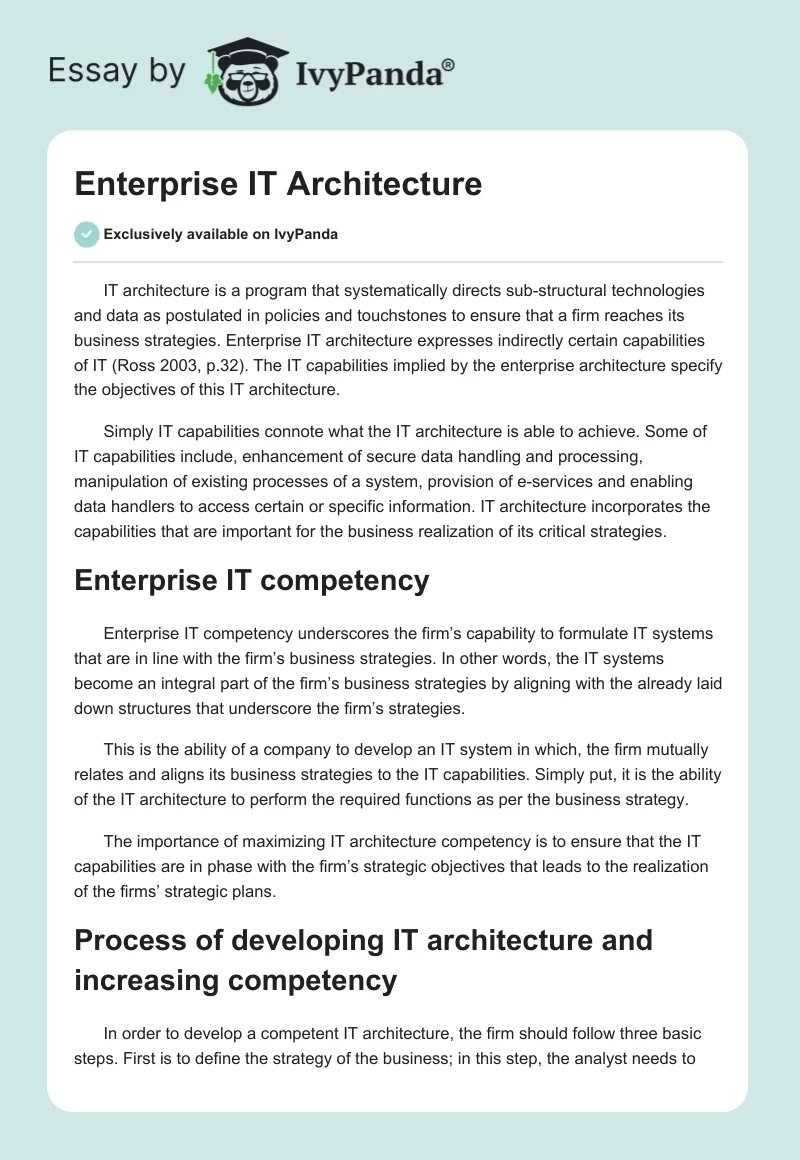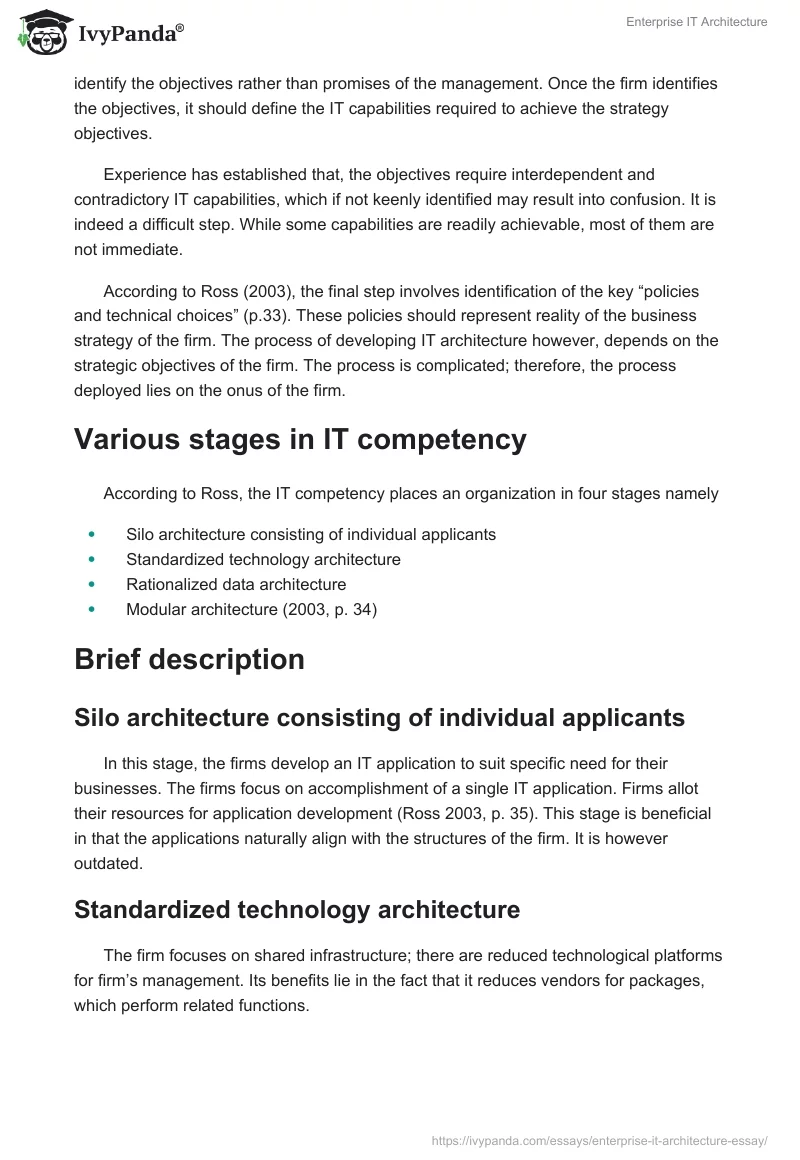IT architecture is a program that systematically directs sub-structural technologies and data as postulated in policies and touchstones to ensure that a firm reaches its business strategies. Enterprise IT architecture expresses indirectly certain capabilities of IT (Ross 2003, p.32). The IT capabilities implied by the enterprise architecture specify the objectives of this IT architecture.
Simply IT capabilities connote what the IT architecture is able to achieve. Some of IT capabilities include, enhancement of secure data handling and processing, manipulation of existing processes of a system, provision of e-services and enabling data handlers to access certain or specific information. IT architecture incorporates the capabilities that are important for the business realization of its critical strategies.
Enterprise IT competency
Enterprise IT competency underscores the firm’s capability to formulate IT systems that are in line with the firm’s business strategies. In other words, the IT systems become an integral part of the firm’s business strategies by aligning with the already laid down structures that underscore the firm’s strategies.
This is the ability of a company to develop an IT system in which, the firm mutually relates and aligns its business strategies to the IT capabilities. Simply put, it is the ability of the IT architecture to perform the required functions as per the business strategy.
The importance of maximizing IT architecture competency is to ensure that the IT capabilities are in phase with the firm’s strategic objectives that leads to the realization of the firms’ strategic plans.
Process of developing IT architecture and increasing competency
In order to develop a competent IT architecture, the firm should follow three basic steps. First is to define the strategy of the business; in this step, the analyst needs to identify the objectives rather than promises of the management. Once the firm identifies the objectives, it should define the IT capabilities required to achieve the strategy objectives.
Experience has established that, the objectives require interdependent and contradictory IT capabilities, which if not keenly identified may result into confusion. It is indeed a difficult step. While some capabilities are readily achievable, most of them are not immediate.
According to Ross (2003), the final step involves identification of the key “policies and technical choices” (p.33). These policies should represent reality of the business strategy of the firm. The process of developing IT architecture however, depends on the strategic objectives of the firm. The process is complicated; therefore, the process deployed lies on the onus of the firm.
Various stages in IT competency
According to Ross, the IT competency places an organization in four stages namely
- Silo architecture consisting of individual applicants
- Standardized technology architecture
- Rationalized data architecture
- Modular architecture (2003, p. 34)
Brief description
Silo architecture consisting of individual applicants
In this stage, the firms develop an IT application to suit specific need for their businesses. The firms focus on accomplishment of a single IT application. Firms allot their resources for application development (Ross 2003, p. 35). This stage is beneficial in that the applications naturally align with the structures of the firm. It is however outdated.
Standardized technology architecture
The firm focuses on shared infrastructure; there are reduced technological platforms for firm’s management. Its benefits lie in the fact that it reduces vendors for packages, which perform related functions.
Rationalized data architecture
In this case, the company employs IT resources to build a central data bank upon which the business’ core activities stand. The efficiency resulting from such a strategy underlines the benefits of this stage. However, it is important to note that extracting information from the central data bank poses a technical challenge to the whole process.
Modular architecture
The reusable or customized modules provide the rationalized data with the agility to implement the core objectives of the business. This is the ideal stage of IT competency. They vastly enhance innovation and leverage the distinctiveness of the firm.
Reference
Ross, J., 2003. Creating a Strategic IT Architecture Competency Leaning in Stages. MIS Quarterly Executive, 2(1), pp.31-43.


